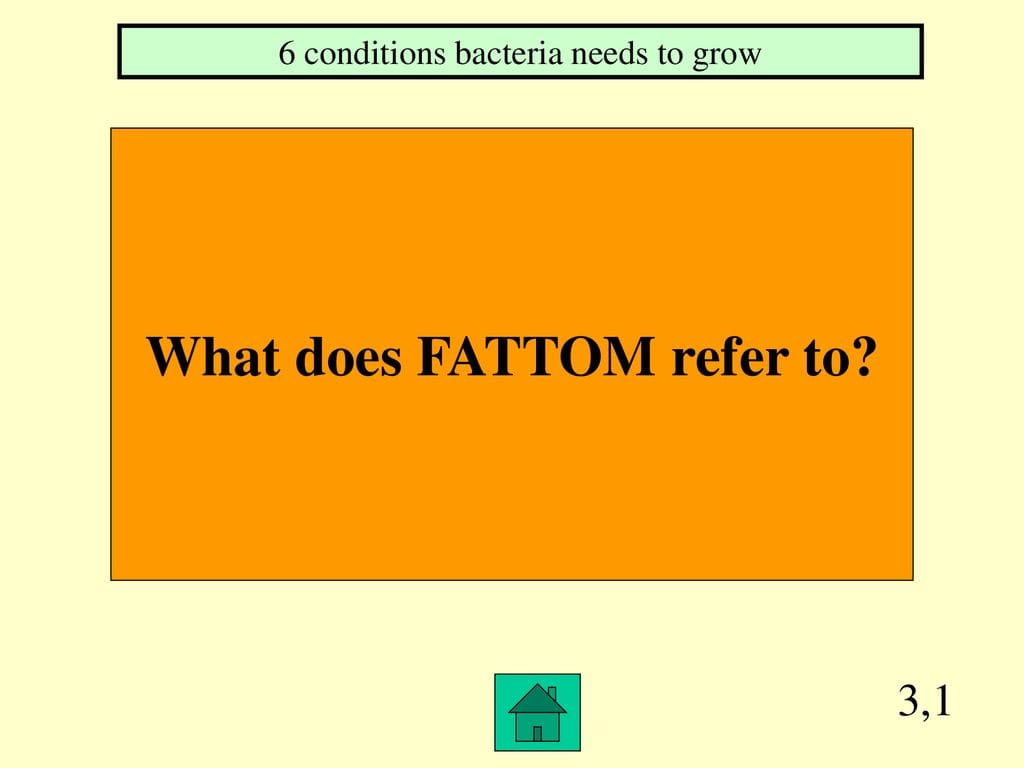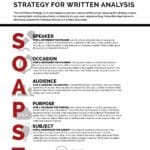Decoding FATTOM: The 6 Factors That Control Foodborne Illness
Is your food safe? Understanding FATTOM—Food, Acidity, Time, Temperature, Oxygen, and Moisture—is key to answering this question. These six factors influence bacterial growth and play a crucial role in preventing foodborne illnesses. By understanding how these elements interact, you can take proactive steps to protect yourself and others.
FATTOM Explained: A Deep Dive into Food Safety
FATTOM is a mnemonic device used by food safety professionals to understand and control bacterial growth. Let’s explore each element in detail:
Food: The Bacterial Buffet
Bacteria, like all living organisms, require nutrients to survive. Protein-rich foods like meat, poultry, fish, eggs, and dairy are particularly susceptible to bacterial growth because they provide an abundant food source. Carbohydrates also offer a good source of energy for bacteria, so foods like cooked rice and pasta should also be handled with care. This doesn’t mean you should avoid these foods, but rather that you should understand their vulnerability and take appropriate precautions.
Acidity: A Hostile Environment for Bacteria
Most harmful bacteria prefer a neutral to slightly acidic environment. Acidity is measured using the pH scale, with lower pH values indicating higher acidity. Foods with a pH below 4.6 are generally considered safe from the growth of most harmful bacteria. Acidic ingredients like vinegar and lemon juice can be used to lower the pH of foods, creating a more hostile environment for bacterial growth. Pickling, fermenting, and adding acidic marinades are all effective ways to leverage acidity for food safety.
Time: The 4-Hour Rule and the Danger Zone
The adage “time is of the essence” holds particularly true in food safety. The “Danger Zone,” a temperature range between 41°F (5°C) and 135°F (57°C), is where bacteria can multiply exponentially. Limiting the time food spends in this danger zone is crucial. The general rule of thumb is to keep perishable foods out of the danger zone for no more than four hours. If the ambient temperature is above 90°F (32°C), this time limit shrinks to just two hours. After this time, the risk of harmful bacterial growth and toxin production significantly increases.
Temperature: Hot Enough to Kill, Cold Enough to Slow
Temperature control is arguably the most important factor in preventing bacterial growth. High temperatures, such as those reached during cooking, can destroy most harmful bacteria. This is why cooking food to its proper internal temperature is critical. Conversely, lower temperatures, like those in your refrigerator (below 41°F / 5°C), slow bacterial growth considerably. Freezing further inhibits bacterial growth, although it’s important to note that freezing doesn’t kill all bacteria; it merely puts them in a dormant state. Maintaining hot foods above 135°F (57°C) and cold foods below 41°F (5°C) is essential for minimizing bacterial risk.
Oxygen: Aerobic vs. Anaerobic Bacteria
Different types of bacteria have varying oxygen requirements. Some bacteria, known as aerobic bacteria, need oxygen to survive, much like humans. Others, called anaerobic bacteria, thrive in oxygen-free environments. Finally, facultative anaerobic bacteria can survive with or without oxygen, making them particularly adaptable. Controlling oxygen exposure through methods like vacuum sealing or modified atmosphere packaging (MAP), where the air around food is altered, can help prevent the growth of specific types of bacteria.
Moisture: The Importance of Water Activity
Bacteria, like all living organisms, need water to survive. Water activity (aw) measures the amount of unbound water available for bacterial growth. A water activity of 0.85 or higher is considered ideal for bacterial proliferation. Techniques like drying, curing, and adding salt or sugar effectively lower water activity by binding water molecules, making them unavailable for bacterial use. This is why methods like making jerky or preserving fruits in sugar syrups have been used for centuries to extend shelf life and enhance food safety.
FATTOM in Action: Real-World Applications
The principles of FATTOM are applied across the food industry, from restaurants to home kitchens. Chefs meticulously monitor temperatures and minimize the time food spends in the danger zone. At home, you can apply FATTOM principles by cooking meat thoroughly, refrigerating leftovers promptly, and using clean utensils. Food processing plants utilize technologies like modified atmosphere packaging and rapid cooling to control bacterial growth during storage and transport. Even seemingly simple acts like marinating meat in an acidic marinade (acidity), vacuum-sealing leftovers (oxygen), or freezing vegetables (temperature and moisture) are practical applications of FATTOM.
Beyond FATTOM: The Bigger Picture
While FATTOM provides a robust framework for understanding bacterial control, other factors also contribute to food spoilage. Enzymatic activity within food and chemical reactions can cause degradation over time. Ongoing research continually refines our understanding of these complex processes, and new technologies are regularly emerging to improve food preservation. For example, hurdle technology combines multiple preservation methods based on FATTOM principles for enhanced safety. Scientists are also exploring predictive microbiology, which uses mathematical models to foresee bacterial growth under different conditions.
Want to learn more about the late stage in the life of low- to intermediate-mass stars? Discover everything about the asymptotic giant branch.
FATTOM: Your 6-Point Checklist for Preventing Food Poisoning
By understanding and applying the principles of FATTOM, you significantly reduce the risk of foodborne illness. It’s a powerful tool for anyone who handles food, from professional chefs to home cooks. Remember, food safety is a continuous learning process. Stay informed, and enjoy your food with confidence!
- Unveiling the Enigma: Mansoureh Khojasteh Bagherzadeh’s Public Appearances & Private Life in Iran - July 18, 2025
- Unveiling the Mystery: Mansoureh Khojasteh Bagherzadeh’s Husband: A Rare Glimpse into a Private Life - July 18, 2025
- Unveiling Masoud Khamenei’s Mother: Power, Influence, and Iran’s Future - July 18, 2025

















1 thought on “Understanding FATTOM: A Culinary Guide to Food Safety and Bacterial Control”
Comments are closed.